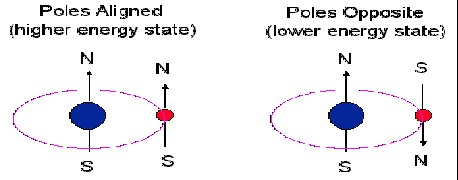21-centimeter line

The 21-centimeter line is an emission line in the radio region of the spectrum that is due to the "spin-flip" transition in neutral hydrogen atoms. The proton and electron making up a hydrogen atom both spin. When their spins are parallel, the atom has slightly more energy than when their spins are antiparallel. As the atom flips from the parallel to the antiparallel state, it emits a radio-wave photon with a wavelength of 21.1 centimeters, equivalent to a frequency of 1,420 MHz.
Most of what is known about the distribution of cold gas in the Galaxy, including the mapping of the nearby spiral arms, has come from detailed studies of the variation of 21-centimeter emission across the sky. The existence of the 21-centimeter line coming from cold clouds of atomic hydrogen was predicted in 1944 by Hendrik van de Hulst. The 21-centimeter line is also a key tool in the study of the cosmic microwave background (CMB), which is the residual radiation left over from the Big Bang.
In 1959, the suggestion by Philip Morrison and Guiseppe Cocconi, concerning the possibility of detecting artificial signals at this wavelength, heralded the birth of SETI in its modern form.


